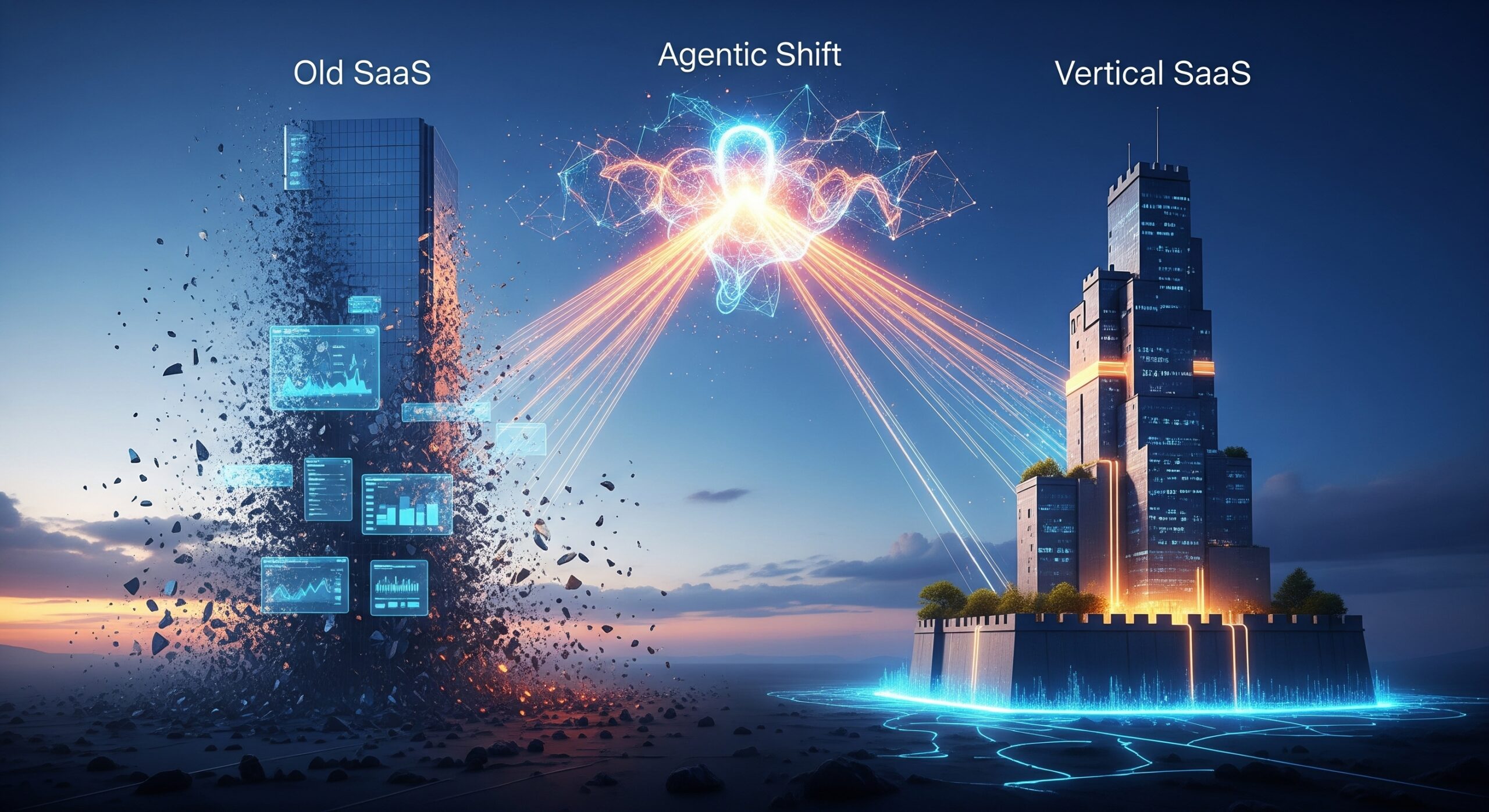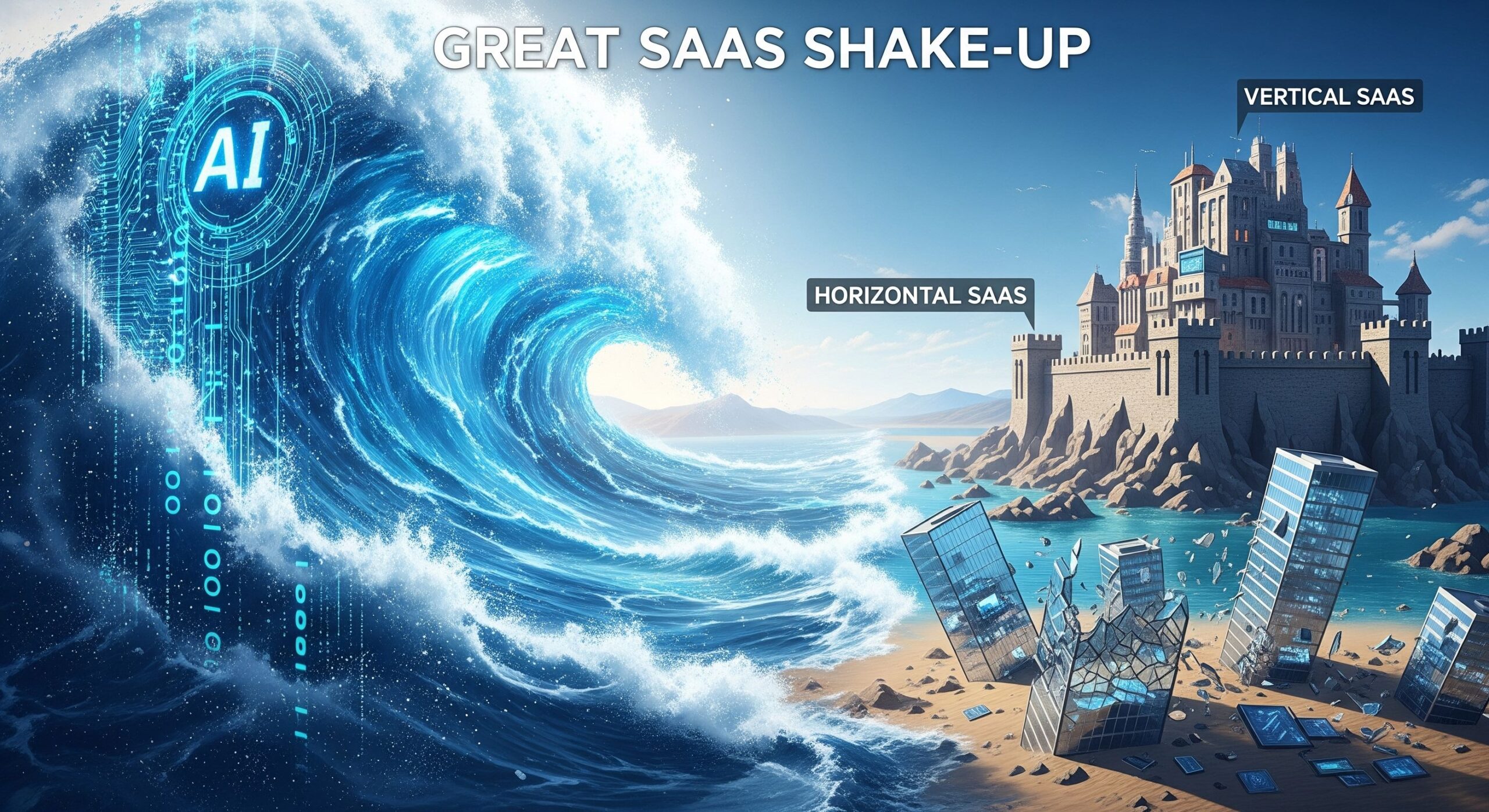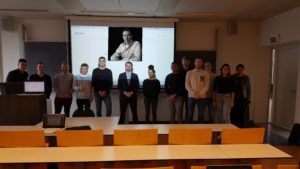
The Challengers Advantage: A Blueprint for Startups and Cloud-Native Scale-Ups
In the previous parts of this series, we have dissected the forces of the AI Tsunami, explored the agentic future, and identified the market’s vulnerabilities. For established incumbents burdened by legacy systems and business models, this era represents a significant threat—a topic we will cover in our final post.
But for you, the challenger, this is not a threat. It is the single greatest opportunity you will see in your career.
Moments of profound technological disruption are the great equalizers. They create openings that disciplined execution and raw ambition can exploit. As a CTO who led through the cloud transition, I saw firsthand how nimble challengers used their agility to outmaneuver large, slow-moving incumbents. The same pattern is repeating now, but at an accelerated pace. The barriers to building sophisticated software are evaporating, and the advantage has shifted decisively from scale to speed.
This post is your blueprint. It is a guide for the AI-native startup launching today and the agile, cloud-native scale-up ready to weaponize its architectural advantage.
Key Takeaways for Founders & Builders
- Your Greatest Asset is Your Lack of Legacy. You are not tied to an outdated tech stack, a per-seat pricing model, or the expectations of an existing customer base. This freedom allows you to build for the AI-native world from day one.
- Solve a Niche Problem, Not a Broad One. The era of building another generic horizontal SaaS tool is over. Your path to victory lies in identifying a high-value, specific pain point within a vertical market and solving it 10x better with AI than any incumbent can.
- “Vibe-Code” Your MVP to Find Product-Market Fit Faster. Use low-code/no-code platforms to get a functional product in front of customers in weeks, not months. The goal is not to build a perfect, scalable architecture at the start; it is to validate your idea and find paying customers with maximum speed and minimum burn.
- Weaponize Your Cloud-Native Architecture. If you are an existing scale-up, your cloud-native stack is your primary weapon. Use it to integrate AI and launch agentic services faster than your legacy competitors, directly attacking their core revenue streams.
The Asymmetric Advantage: Why Speed Beats Scale
In stable markets, scale is a formidable advantage. Large companies have the resources, brand recognition, and distribution channels to dominate. In a disruptive market, however, these assets can become anchors. Incumbents are shackled by technical debt, quarterly earnings pressure, and a culture resistant to cannibalizing existing revenue streams.
You, the challenger, have none of these constraints. AI development tools have commoditized the act of writing code, leveling the playing field. Your competitive advantage is not a bigger engineering budget; it is the ability to move faster, learn more quickly, and make bolder decisions. While an incumbent is debating the Q3 impact of shifting its pricing model, you can be launching an AI-driven service that makes their model obsolete. This is the definition of asymmetric warfare, and you are perfectly positioned to win.
The Startup Blueprint: From Vibe-Code to Venture Scale
For the founder launching a SaaS company in 2025, the playbook has been radically simplified and accelerated. The path from idea to revenue is shorter than ever before, provided you follow a disciplined, customer-obsessed approach.
Step 1: Find the Niche, Solve the Pain.
Forget trying to build the next Salesforce. Instead, find a workflow inside a specific vertical—legal tech, construction, biotech—that is still reliant on spreadsheets and manual processes. Your mission is to find a single, acute pain point and use AI to solve it completely. Is there a repetitive, language-based task that can be automated? Is there a complex analysis that can be done autonomously? This is your entry point.
Step 2: Build Fast, Learn Faster with “Vibe-Coding.”
I call this the “vibe-coding” phase. Use low-code or no-code platforms like Bubble or Retool to build your Minimum Viable Product (MVP). The goal here is not elegant code; it is speed to feedback. You need to get a working product into the hands of your target users as quickly as humanly possible. Validate that the problem is real and that customers are willing to pay for your solution. This focus on rapid iteration to find Product-Market Fit (PMF) is everything.
Step 3: Build for an Agentic Future from Day One.
Even in the MVP phase, think like an AaaS provider. Design your solution to deliver an outcome, not just present a tool. Ensure that your low-code platform can connect to other services via APIs. This architectural foresight is critical. When it comes time to scale, you will have already validated a workflow that is ready for an agentic, “headless” world, giving you a massive head start.
Step 4: Rebuild for a Cloud-Native Scale—This is Not Optional.
Once you have clear evidence of PMF—strong retention, happy customers, and growing revenue—you must transition away from your MVP framework. This step is not a “nice to have”; it is a critical requirement for survival and growth. The “vibe-code” tools that got you here have serious limitations in scalability, performance efficiency, and security that make them unsuitable for a production-grade application.
Your goal is to build a robust, scalable, and secure platform. This requires hiring a small team of skilled developers to architect a cloud-native solution from the ground up. By embracing a cloud-native design, you can leverage higher-level managed services from cloud providers like AWS, Azure, or Google Cloud. Using serverless functions, managed databases, and integrated AI services is a major competitive advantage. It allows you to move faster than competitors by focusing your engineering resources on your unique business logic, not on managing underlying infrastructure. By waiting until you have PMF, you avoid the classic startup mistake of wasting capital on a perfect architecture for the wrong product. By not skipping this step, you avoid the fatal error of trying to scale a business on a foundation that will inevitably crumble.
The Cloud-Native Scale-Up Playbook: Weaponizing Agility
If you are an existing scale-up already operating on a modern, cloud-native stack, you are in an even more powerful position. You have an established product, a customer base, and the architectural foundation to outmaneuver the lumbering giants in your market.
1. Leverage Your Architectural Superiority.
Your microservices architecture and CI/CD pipelines are a strategic weapon. While your non-cloud-native competitors are struggling with monolithic codebases, you can integrate new AI models and ship features in a fraction of the time. Use this advantage to relentlessly add AI-driven value to your product, widening the gap between you and the competition every single week.
2. Institute Rigorous Operational & Financial Discipline.
Before layering expensive AI workloads onto your stack, you must commit to ruthless efficiency. Mature DevOps teams already practice value engineering, but it’s now a board-level issue. Adding the “AI tax” to an unoptimized cloud spend is a recipe for margin erosion. Furthermore, extend your operational metrics to this new discipline. If you use DORA metrics to measure your software delivery performance, apply the same principles of tracking deployment frequency, lead time, and reliability to your AI model deployment and performance. This ensures you are building a high-performing—and financially sustainable—AI practice.
3. Master the Discipline of Data Engineering.
Superior AI performance is a direct result of superior data quality. “Garbage in, garbage out” has never been more true. It is imperative to invest in data engineering as a core competency. This means optimizing the entire lifecycle of your data: its capture, cleansing, transformation, and accessibility. A robust data pipeline ensures your AI models are trained on clean, relevant, and well-structured data, which is the ultimate source of their intelligence and your competitive edge.
4. Be the First to Launch Agentic Services.
Do not wait for incumbents to pivot. Use your agility to be the first in your niche to offer a true Agent-as-a-Service solution. Transform your product from a passive tool into an autonomous service that delivers guaranteed outcomes. This move will allow you to redefine your market category and capture the highest-value customers before your competitors even know what happened.
5. Attack the Incumbent’s Cash Cow.
Identify the most overpriced and underserved segments of your market, which are often the core revenue streams of legacy players. Launch a leaner, smarter, AI-powered alternative at a more competitive price point. Your lower operational costs and superior technology allow you to be aggressive, turning an incumbent’s greatest strength—their existing customer base—into their greatest vulnerability.
For both the startup and the scale-up, the message is the same: the AI revolution is a window of opportunity. It is a moment in time where the established hierarchy of the software world is being reset. Do not be intimidated by the scale of the incumbents. In this new era, they are the ones who should be intimidated by your speed.
Coming up in our final installment: We will look at the other side of the coin. In The Incumbent’s Survival Guide: A Roadmap for Non-Cloud-Native Scale-Ups, I will lay out the difficult but necessary choices facing established players in the fight for relevance.







